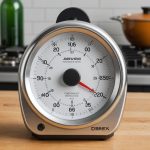Maximizing Energy Efficiency: Top Tips for Using Your Dishwasher During Peak Hours
In the quest to reduce energy consumption and lower those pesky energy bills, one often overlooked but crucial appliance in your home is the dishwasher. While it might seem counterintuitive to use your dishwasher during peak hours, there are several strategies and tips that can help you maximize energy efficiency even during these times. Here’s a comprehensive guide to make your dishwasher use more efficient, saving you money and reducing your environmental footprint.
Understanding Your Dishwasher's Energy Consumption
Before we dive into the tips, it's essential to understand how your dishwasher consumes energy. Dishwashers use a significant amount of water and electricity, especially for heating water and powering the various cycles.
Have you seen this : Unveiling the Benefits: Why Ceramic Knives Outshine Traditional Steel Knives
Water Energy Usage
Dishwashers rely heavily on hot water, which is one of the most energy-intensive aspects of their operation. According to the National Energy System Operator (NESO), using hot water accounts for a substantial portion of your energy consumption.
Cycle Times and Energy
Modern dishwashers often have extended cycle times due to their energy-saving features. For instance, the "Eco mode" in many dishwashers uses less energy by heating the water less and soaping the dishes longer, which can save around 523 kWh of energy per year compared to the Auto programme.
In the same genre : Top Trusted Brands for Electric Grills: Your Guide to Reliable Cooking Options
Choosing the Right Cycle for Efficiency
One of the simplest ways to maximize energy efficiency is by selecting the right cycle for your dishes.
Eco Friendly Cycles
Opting for the "Eco mode" or "Energy Saver" cycle can significantly reduce your energy consumption. These cycles typically use lower water temperatures and extended wash times, which, although longer, are more energy-efficient. For example, Bosch's Eco mode uses 0.73 kWh per cycle, which is substantially less than other programmes.
Quick Wash Cycles
For lightly soiled dishes, using the "Quick Wash" or 1-hour wash cycle can be a smart choice. These cycles are designed to save water and energy by completing the wash in a shorter time frame. However, it's crucial to ensure that the dishes are not too dirty, as this could compromise the cleaning efficiency.
Optimizing Your Dishwasher's Performance
To get the most out of your dishwasher while minimizing energy use, here are some practical tips:
Check the Water Temperature
Ensuring the water supply temperature is optimal can significantly impact your dishwasher's efficiency. If the water temperature is below 120 degrees, it will take longer for the dishwasher to heat the water, increasing the cycle time and energy consumption. You can check the water temperature by running hot water from your kitchen sink faucet for a minute and measuring it with a cooking thermometer.
Maintain Your Dishwasher
Regular maintenance is key to keeping your dishwasher running efficiently. Clean the sump filters regularly to prevent clogs and debris build-up, which can extend cycle times. Also, inspect the motors, thermostats, and sensors to ensure they are functioning correctly. Faulty components can lead to longer cycle times and increased energy use.
Use Energy-Efficient Features
Many modern dishwashers come with energy-efficient features such as the "Heated Dry" option. Turning off this option can save energy, as dishes can dry without the heating element. Additionally, using the "Sanitize" cycle only when necessary can help reduce energy consumption, as this cycle uses higher temperatures and more energy.
Reducing Standby Power and Phantom Loads
Standby power, also known as phantom load or vampire power, is the energy consumed by appliances when they are turned off but still plugged in. Here’s how you can reduce this unnecessary energy use:
Unplug Appliances
Unplugging your dishwasher and other appliances when not in use can save a significant amount of energy. According to the US Department of Energy, unplugging devices can save the average household up to $100 per year.
Use Smart Plugs and Surge Protectors
To make the process of cutting phantom loads more automatic, consider using smart plugs or surge protectors. These devices allow you to turn off multiple appliances with a single switch or automate the power connection based on your usage patterns.
Scheduling Your Dishwasher Use
While it might seem counterintuitive, using your dishwasher during peak hours can be efficient if done smartly.
Running During Off-Peak Hours
Running your dishwasher during off-peak hours, usually at night, can take advantage of lower energy rates and reduce the load on the power grid during peak times. However, if you must use it during peak hours, ensure you are using the most energy-efficient cycle available.
Load Management
Ensure you are running full loads in your dishwasher to maximize the energy used in each cycle. Running half loads consumes the same amount of energy as full loads, so it’s more efficient to wait until you have a full load of dishes.
Additional Tips for Energy Efficiency in Your Kitchen
Here are some additional tips to make your kitchen more energy-efficient:
Use Efficient Appliances
Investing in Energy Star-rated appliances, including dishwashers, can significantly reduce your energy consumption. These appliances are designed to use less water and energy while maintaining high performance.
Utilize Natural Light and Small Appliances
During daylight hours, discourage the use of lights and instead utilize natural light. Also, use smaller appliances like microwaves, sandwich makers, or air fryers for preparing meals, as they emit less heat and use less energy compared to traditional ovens.
Insulate and Optimize Other Appliances
Insulating exposed hot-water pipes can reduce the time it takes to heat water, thus saving energy. Additionally, adjusting the anti-sweat feature on your refrigerator and ensuring good air flow around it can improve its efficiency.
Practical Insights and Actionable Advice
Here are some practical insights and actionable advice to help you make the most out of your dishwasher and other kitchen appliances:
Detailed Tips for Energy Efficiency
- Choose the Right Cycle: Select cycles that match the level of dirt on your dishes. Eco-friendly cycles are ideal for lightly soiled dishes.
- Maintain Your Dishwasher: Regularly clean filters and inspect motors, thermostats, and sensors to ensure optimal performance.
- Use Smart Features: Turn off the Heated Dry option and use the Sanitize cycle only when necessary.
- Unplug Appliances: Unplug your dishwasher and other appliances when not in use to reduce standby power.
- Schedule Wisely: Run your dishwasher during off-peak hours if possible, and ensure full loads to maximize energy efficiency.
Comparative Table: Energy Consumption of Different Cycles
| Cycle Type | Energy Consumption (kWh) | Water Consumption (Liters) | Cycle Time (Minutes) |
|---|---|---|---|
| Eco Mode | 0.73 | 10 | 180 |
| Auto Programme | 1.2 | 15 | 120 |
| Quick Wash | 0.9 | 8 | 60 |
| Heavy Duty | 1.5 | 20 | 240 |
Quotes from Experts
- "Using the Eco mode can save you around 523 kWh of energy per year compared to the Auto programme," says Bosch Home Appliances.
- "Unplugging devices can save the average household up to $100 per year," according to the US Department of Energy.
Maximizing energy efficiency in your home, especially in the kitchen, is a multifaceted approach that involves smart appliance use, regular maintenance, and mindful scheduling. By choosing the right dishwasher cycles, maintaining your appliance, reducing standby power, and scheduling your use wisely, you can significantly lower your energy bills and contribute to a more sustainable future.
In the words of energy efficiency experts, "Every small change you make can add up to make a big difference in your energy consumption and costs." So, the next time you load up your dishwasher, remember these tips and make a smart choice that benefits both your wallet and the environment.











